Managing an Underground Maze
 How Europe’s busiest airport keeps an eye on invisible assets
How Europe’s busiest airport keeps an eye on invisible assets
Amid the whirl of activity that occurs at a major airport— the carefully orchestrated movement of aircraft, passengers and cargo—much of the activity takes place out of sight. An airport’s underground infrastructure is as complex and busy as its aboveground facilities. Pipelines carry fuel, water, sewage, stormwater and de-icing fluids. Conduits contain cables for power and control of buildings, airfield lighting, communications and security. Access pits and manholes contain pumps, transformers, switchgear and other equipment needed to keep the airport operating safely and efficiently.
A key part keeping the underground infrastructure operating smoothly is knowing the where, what and how of thousands of objects. Modern airport management can leverage geospatial technologies and information management to control costs and improve productivity in operations and maintenance. Geospatially enabled systems for assets and facilities can track an object’s location, function, operating status and maintenance information.
But asset management goes beyond managing expenses. The constant work to maintain and improve airport facilities often entails digging holes and trenches in areas crisscrossed by pipes and cables. An unexpected encounter with an underground line can result in costly accidents or delays.
At London’s Heathrow airport, the sheer density of the installation complicates the work of keeping track of underground assets. Heathrow, the third-busiest passenger airport in the world, is actually compact when compared to other major airports. Heathrow’s two runways and five terminals occupy 1,227 hectares, compared to Frankfurt International Airport and New York’s JFK, which each cover roughly 2,100 hectares while handling fewer passengers.
According to Andy Rhoades, Heathrow’s head of service protection, the crowded airfield contains 45,000 manholes and thousands of miles of underground lines. “We have 13 different utilities ranging from gas and potable water, storm and sewers, up to the high-pressure fire networks, aeronautical ground lighting networks, and electrical networks at high, medium and low voltage. We have district heating and high temperature water networks as well.” Rhoades said that Heathrow’s extensive GIS uses Trimble Juno® and GeoExplorer® 6 and 7 Series handhelds to provide positioning information for maintenance and inspection teams. The accurate positioning helps reduce risk of accidents during the roughly 1,200 excavations that are underway at Heathrow at any one time.
Even using GNSS, the density of Heathrow’s infrastructure can introduce challenges in identifying and managing specific assets. To solve the issue, Heathrow turned to radio frequency identification (RFID). Rhoades said that in 2003 they identified a need to tag airport assets with unique identifiers to better understand their life cycle and to help improve efficiency both for everyday maintenance and urgent unplanned works.
Heathrow teams developed a solution that enabled them to attach RFID tags to items such as runway centreline lights, manholes and other buried assets. Using a Trimble handheld with RFID capability, maintenance teams can quickly confirm they are working on the proper asset. The solution can track status and activities related to an asset as well.
For example, Heathrow has more than 22,000 light fixtures in its airfield ground lighting network (AGL), which provides guidance for pilots and vehicles on runways, taxiways and terminal areas. Using RFID, information is stored in a tag attached to each fixture. An RFID reader will identify a specific light and confirm the location. It can record that the fitting was removed and track it through the maintenance process. “The important bit is when you install a fitting,” Rhoades said. “It records when and where the fitting is installed. It connects via Bluetooth to the digital torque wrench to provide torque settings that ensure the fitting is installed correctly. The system counts and records that you’ve done the right number of bolts and confirms that you’ve applied the correct torque.” At the end of a shift, information can be reviewed to verify proper installation. The approach eliminates the need for follow-up checking and reduces labour and runway downtime.
RFID has produced other savings for Heathrow. Rhoades explained that Heathrow’s manholes (known as “pits”) use a standard design and cover to support the weight of passing aircraft. As a result, crews can’t easily tell if a pit contains a transformer, storm drain or other equipment. “It can take an hour to get a pit open,” Rhoades said. “You can spend the night lifting pits before you find the one you are looking for. With RFID, crews get to the right location the first time. You can very quickly find exactly what you’re looking for.” The information displayed on the Trimble handhelds is not only location; RFID tells crews exactly what assets are in the pit. Often working in darkness or bad weather, crews appreciate the added confidence in locating and opening the correct pit.
As Heathrow continues to update and redevelop its infrastructure, Rhoades is improving the use of RFID and geospatial information. Construction teams now map and attach tags to fire mains and valves as they are installed. “We’ve got maps on the handhelds, and the RFID tags hold all the information. They can tell you what the service is, depth below ground and what material it is.” Data from the RFID is delivered to the airport’s maintenance database where it can be utilized in an array of tasks for planning, construction, operations and maintenance.
The improved tracking of underground utilities is producing measurable benefits. In 2004, roughly 1.8 percent of construction or maintenance work at Heathrow had service strikes attributed to inaccurate information about the underground services. In 2013, that number had decreased to roughly 0.2 percent, a nearly tenfold improvement. Work continues to map and catalogue Heathrow’s underground utilities. About 74 percent of the known infrastructure is mapped with accuracy within 500 mm. When the accurate locations are combined with RFID-based information management, the airport is well on its way to an accurate, cost-effective system for infrastructure management.
This article original appeared in technology & more, issue 2016-3. Read the full magazine.



